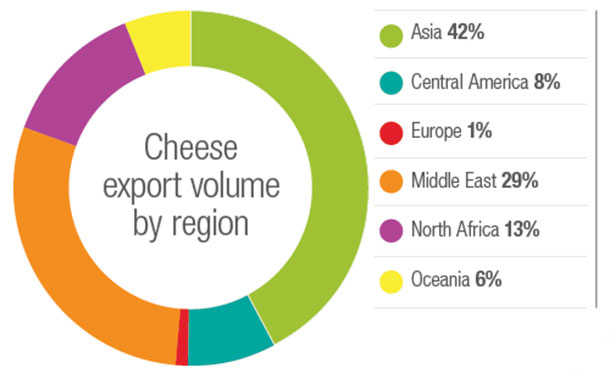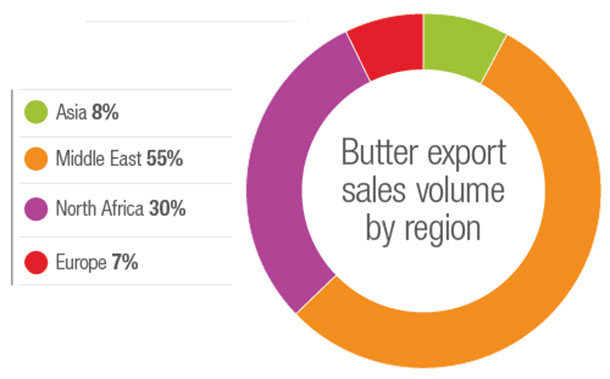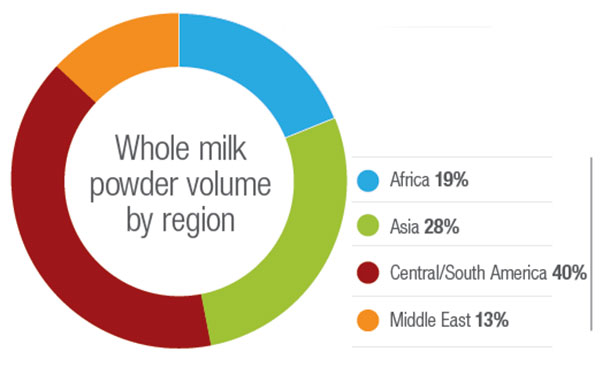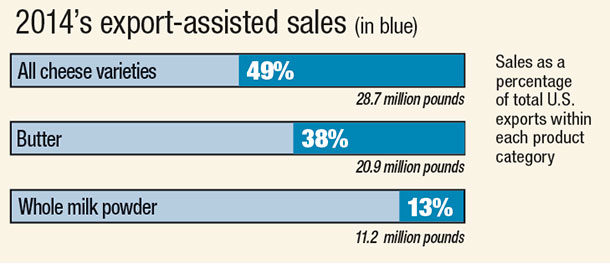In the second quarter of 2014, the number of export markets reached and the volume of product Cooperatives Working Together (CWT) assisted its member cooperatives to sell expanded dramatically.
The countries buying an export-assisted product grew from 27 to 41 and spanned six continents. The total volume of products sold grew from 69.1 million pounds to 130 million pounds and comprised cheese, 82-percent butter and whole milk powder (WMP).

In the second quarter of this year, CWT received 375 requests for export assistance. Of those, CWT provided member cooperatives with assistance on 187.

This resulted in 28.7 million pounds of Cheddar, Gouda and Monterey Jack cheese, 20.9 million pounds of 82% milkfat content butter and 11.2 million pounds of whole milk powder being sold. Sales of whole milk powder jumped dramatically in the most recent quarter, with sales expanding into Africa and Asia.

Japan accounted for 79 percent of all cheese exports to Asia. In the Middle East, 91 percent of the cheese was sold into Saudi Arabia, and 62 percent of the cheese sales to North Africa went to Egypt.
More than half of the export-assisted butter sales in the first half of 2014 went to the Middle East. Iran with 46 percent of assisted butter sales surpassed Saudi Arabia as the leading Middle East destination. PD
Cooperatives Working Together (CWT) was designed by Americaâs dairy farmers to benefit all of Americaâs dairy farmers. It is a voluntary, producer-funded program developed by National Milk Producers Federation (NMPF) to strengthen and stabilize producer prices. Participating producers contribute four cents per hundredweight of milk produced to fund the program. For membership information go to their website .
GRAPHS
For the first half of 2014, export-assisted product sales totaled 58.8 million pounds for cheese, 47.5 million pounds for butter and 14.6 million pounds for whole milk powder, adjusted for cancellations. On a milkfat basis, these sales will use the equivalent of 1.753 billion pounds of milk, which is equal to the average annual milk production of 80,331 cows.




